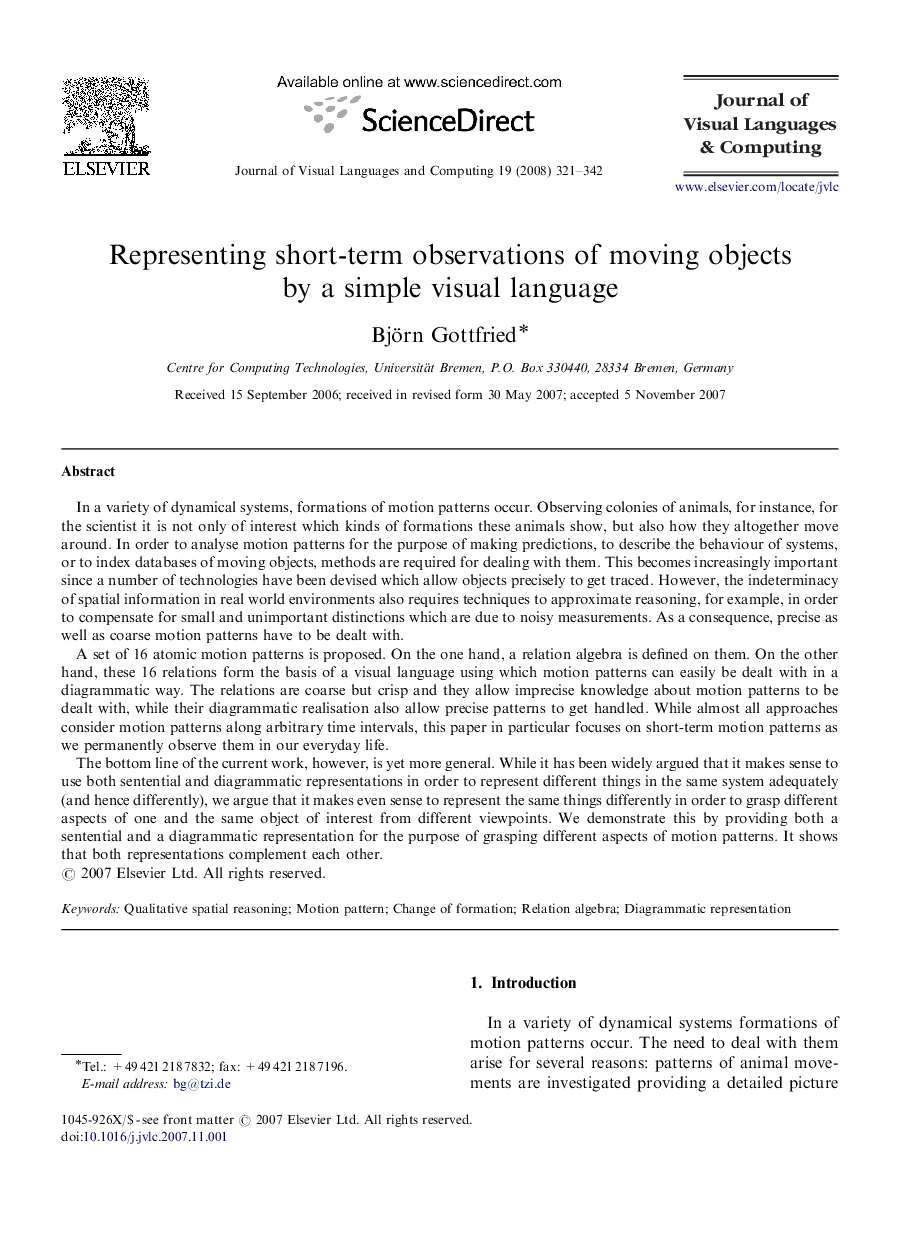| کد مقاله | کد نشریه | سال انتشار | مقاله انگلیسی | نسخه تمام متن |
|---|---|---|---|---|
| 523803 | 868497 | 2008 | 22 صفحه PDF | دانلود رایگان |

In a variety of dynamical systems, formations of motion patterns occur. Observing colonies of animals, for instance, for the scientist it is not only of interest which kinds of formations these animals show, but also how they altogether move around. In order to analyse motion patterns for the purpose of making predictions, to describe the behaviour of systems, or to index databases of moving objects, methods are required for dealing with them. This becomes increasingly important since a number of technologies have been devised which allow objects precisely to get traced. However, the indeterminacy of spatial information in real world environments also requires techniques to approximate reasoning, for example, in order to compensate for small and unimportant distinctions which are due to noisy measurements. As a consequence, precise as well as coarse motion patterns have to be dealt with.A set of 16 atomic motion patterns is proposed. On the one hand, a relation algebra is defined on them. On the other hand, these 16 relations form the basis of a visual language using which motion patterns can easily be dealt with in a diagrammatic way. The relations are coarse but crisp and they allow imprecise knowledge about motion patterns to be dealt with, while their diagrammatic realisation also allow precise patterns to get handled. While almost all approaches consider motion patterns along arbitrary time intervals, this paper in particular focuses on short-term motion patterns as we permanently observe them in our everyday life.The bottom line of the current work, however, is yet more general. While it has been widely argued that it makes sense to use both sentential and diagrammatic representations in order to represent different things in the same system adequately (and hence differently), we argue that it makes even sense to represent the same things differently in order to grasp different aspects of one and the same object of interest from different viewpoints. We demonstrate this by providing both a sentential and a diagrammatic representation for the purpose of grasping different aspects of motion patterns. It shows that both representations complement each other.
Journal: Journal of Visual Languages & Computing - Volume 19, Issue 3, June 2008, Pages 321–342